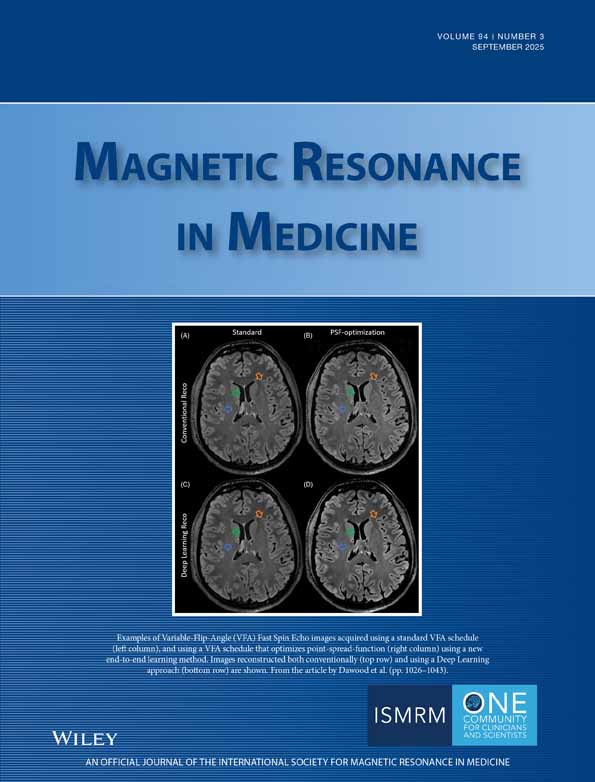Fast echo-shifted gradient-recalled MRI: Combining a short repetition time with variable T2* weighting
Abstract
The principles of a fast T2*-sensitized MR imaging method (Moonen et al., Magn. Reson. Med. 26, 184 (1992)) are extended to further increase T2* sensitivity. It is shown that the period of T2*-weighting can be lengthened by n TR-periods by appropriate gradient schemes without RF refocusing resulting in progressively delayed gradient-recalled echoes. This extension of the echo-shifting concept thus introduces large flexibility in the choice of T2*-weighting without changing total imaging time. The coherence pathway formalism is used to evaluate and describe the selection of the desired echo and the attenuation of unwanted coherences. The new techniques are demonstrated for tracking a bolus of susceptibility contrast agent in cat brain. Relative blood-volume maps are derived with expected contrast between white and gray matter.




